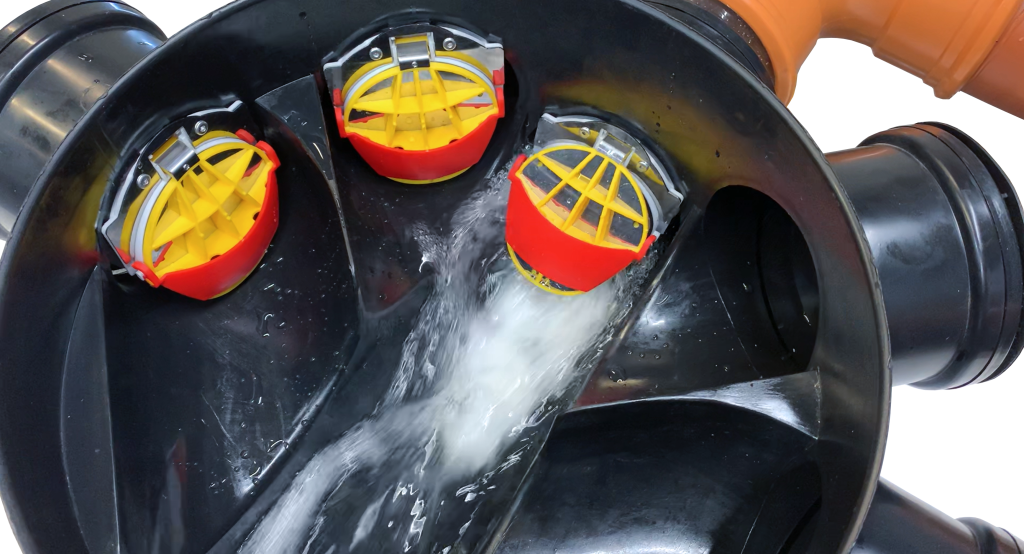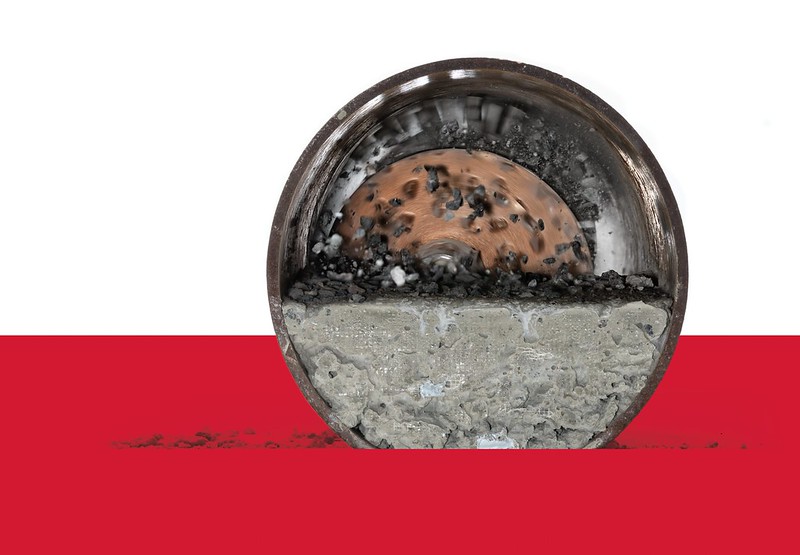Last week several flood warnings were in place, as Storm Babet swept across the country, and unfortunately, many parts of the UK were submerged under water as heavy rainfall came throughout the weekend and river levels continued to rise, bursting their banks, and leaving homes flooded and residents at a loss.
This an incredibly difficult and challenging situation from Mother Nature as floodwaters can cause significant pressure on your drainage system. With water directly entering homes via doorways, floodwaters in drainage systems enable water to move backwards, reversing the flow of water and causing dirty water to enter a home through overflowing sinks, toilets, and washing machines.
We suggest installing (either by yourself or by a drainage contractor) a Non-return Valve; its unique design stops back-flow from drains in a flood event. Its one-way, stainless-steel flap allows foul water to leave your home, but automatically closes to prevent back-flow from drains – it’s also a humane way to protect the home from rats as it allows rats to leave the property but not return by coming up drain pipes.
The unique flap design also means the flap doesn’t catch on the chamber walls – which could restrict its movement and operation. The valve can open on a 45-degree bend due to its unique flap design it does not catch on the sides.

A non-return valve is a simple yet effective system that could help homeowners, however, the real work that needs to be done is the cleaning and rehabilitation of drainage systems.
A crucial part of flood control is the drainage system, when not kept clean and free from obstruction, the drains cannot take excess water from the road into the sewer system and prevent flooding.
What could be blocking drainage systems and causing flood events?
Reported blocked street drains can be obstructed with so many varied materials that could be building up and causing blockages or break lines in pipelines, such as fats, oils, greases, concrete, failed liners, and roots.
Issues could also lie with tuberculation build-up in cast iron pipes, this happens when there is a build of slime caused by iron-eating bacteria. As the pipes begin to dissolve the interior of the pipe becomes rough and jagged causing debris to build and clog, then restricting the flow of water or sewage.
Commonly, you can find concrete blockages in pipes from contractors regularly washing cement or other building materials from tools down drains, or even simply pouring concrete down a drain…a tough job to remove, unless you have the right tools to help!
To help with flood prevention it is important to be on top of drainage system maintenance and remove the build of tuberculation and FOGs to clean the pipe, so it is back to full working order and enabling water to flow more freely.
We suggest and supply Drainage Contractors with a selection of abrasive cleaning tools such as grinding chains and cutting attachments. They are great multi-use tools that remove large build-ups of scale with their extremely effective cleaning features and size ranges to suit any diameter.
Chains are designed for tough jobs and can be used in cast iron, concrete, and clay pipes. Here at S1E, we stock a range of Picote drain cleaning tools, they offer a large range of grinding tools for high-speed cleaning with the Picote Miller Range. Together the combination of Picote Millers and Picote Cleaning Tools provides expert results, eliminating scale and removing blockages. With four types of Grinding Chains available you can choose how fast, large, and abrasive you need the cleaning to be. Find out more here:Picote cleaning chains (s1e.co.uk)

Once cleaned and free from obstruction water can move more freely, or you may be looking at a pipe repair either requiring a patch repair or CIPP lining methods. A cured-in-place pipe (CIPP) is one of several trenchless rehabilitation methods used to repair existing pipelines. CIPP is one of the most widely used rehabilitation methods for lateral sewers, storm lines and water mains, as curing lining within the existing pipe can eliminate infiltration add strength to a pipeline, prevent pipe delamination/scaling and prevent corrosion.
CIPP methods offer pipeline engineers the option to significantly extend the life expectancy of an existing pipeline without the need to remove the old pipeline from its route, whether this is a buried pipe, a surface network, or a pipeline within a building. (To find out more about CIPP lining methods read our April 2023 Blog Post).
As the winter sets in, stormy weather can occur more frequently, causing the threat of flood waters to rise, so taking the appropriate measures to protect homes from flood damage could save thousands, or even hundreds of thousands, in damage repairs.
It is the responsibility of water companies to ensure drainage systems are maintained and ensure residents are serviced efficiently, as a contractor you can showcase your services by providing several options, with innovative tools to clean, cut and rehabilitate pipelines so they can make significant savings by not making costly excavation to remove failed CIPP linings, concrete, grout, slurry, and rocks from pipes.
For more info and advice on which cleaning and cutting systems are most suitable for your next job, get in touch with the S1E Sales Team on 01226 397015 or email contact@s1e.co.uk.